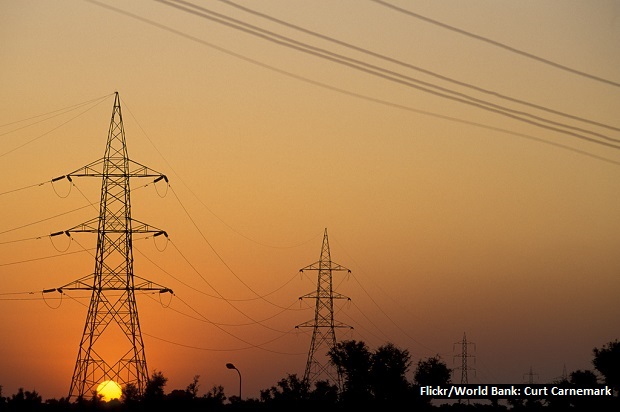Power Demand Up 94%, But Bihar Cannot Cope
Bihar is now India's second-fastest growing economy among poor states, with a peak power demand that has risen 94% about seven years. This growth-driven surge in electricity demand sounds impressive--until you sift through the details of the data.
With 104 million people, India's third-most populous state reported a peak power demand of 3,500 mega watt (MW) in 2014-15, about the same as Mumbai (which has a fifth of Bihar's population).
The per capita power consumption in Bihar is 144 kilo watt hour (kwh), 85% lower than the all-India average of 927 kwh. Only 26% of rural households are electrified, the worst of any state, IndiaSpend reported earlier.
It is clear that Bihar cannot meet the rising electricity demands of its people.
Power deficits fall, Bihar remains energy starved
The peak demand was 1,800 MW in 2007-08, which increased to 3,500 MW in 2014-15. Peak power availability was 1,244 MW in 2007-08, which increased to 2,831 MW in 2014-15.
Bihar faces a power deficit (the difference between peak demand and electricity supplied) of 19%, according to the Economic Survey 2014-15.
Power Scenario In Bihar, 2008 to 2015
Source: Economic Survey 2014-15; Central Electricity Authority- 1, 2, 3, 4, 5, 6, 7, 8 (Load Generation Balance Report 2008-09: 1; 2009-10: 2; 2010-11: 3; 2011-12: 4; 2012-13: 5; 2013-14: 6; 2014-15: 7, 2015-16: 8.)
However, the Central Electricity Authority (CEA) report states that the power deficit has been brought down to 4% in 2014-15 from 34% in 2007-08.
Despite the mismatch in data, the energy deficit has clearly dropped.
Source:Central Electricity Authority; Figures in MW; Data as on August 31, 2015
The installed electricity generation capacity in Bihar was 2,759 MW on August 31, 2015. This is 1% of India's power capacity and 8% of the eastern region (Jharkhand, West Bengal, Odisha, Sikkim, Damodar Valley Corporation and Bihar).
Among the eight backward states of Bihar, Chhattisgarh, Jharkhand, Madhya Pradesh, Orissa, Rajasthan, Uttarakhand and Uttar Pradesh, Bihar (4%) had a lower power deficit, compared with Chhattisgarh (4.7%) and Uttar Pradesh (17%) during 2014-15, according to the CEA’s Load Generation Balance Report 2015-16.
Source: Central Electricity Authority
Some states, such as Rajasthan and Uttarakhand, had no power deficits. India’s power deficit was reported to be 4.7% during the year 2014-15.
Source: Central Electricity Authority
Jammu and Kashmir is the most energy-starved state along with Andaman and Nicobar facing power deficit of 20%.
There are many other states, such as Telangana (14.3%), Assam (13.3%), Punjab (13.1%), Kerala (4.4%) and Karnataka (4.5%), that have higher power deficits than Bihar.
So, Bihar appears to be doing well, as regards power deficits, but that is because its power demand, capacity and generation, as we mentioned, are very low.
Bihar’s power generation is primarily dependent on thermal energy (91%), while hydro and renewables account for only 5% and 4%, respectively.
Bihar is also challenged by high transmission and distribution (T&D) losses, reported to be 42% in 2013-14 against the Indian average of 27%.
Financial losses, measured in terms of cost coverage, are as high as 52% for the north Bihar distribution network and 50% for the south Bihar distribution network in 2013-14.
(Mallapur is a policy analyst with IndiaSpend.)
(This story is part of IndiaSpend’s special analyses of Bihar. You can read the other stories of this series here.)
_________________________________________________________________
“Liked this story? Indiaspend.org is a non-profit, and we depend on readers like you to drive our public-interest journalism efforts. Donate Rs 500; Rs 1,000, Rs 2,000.”



